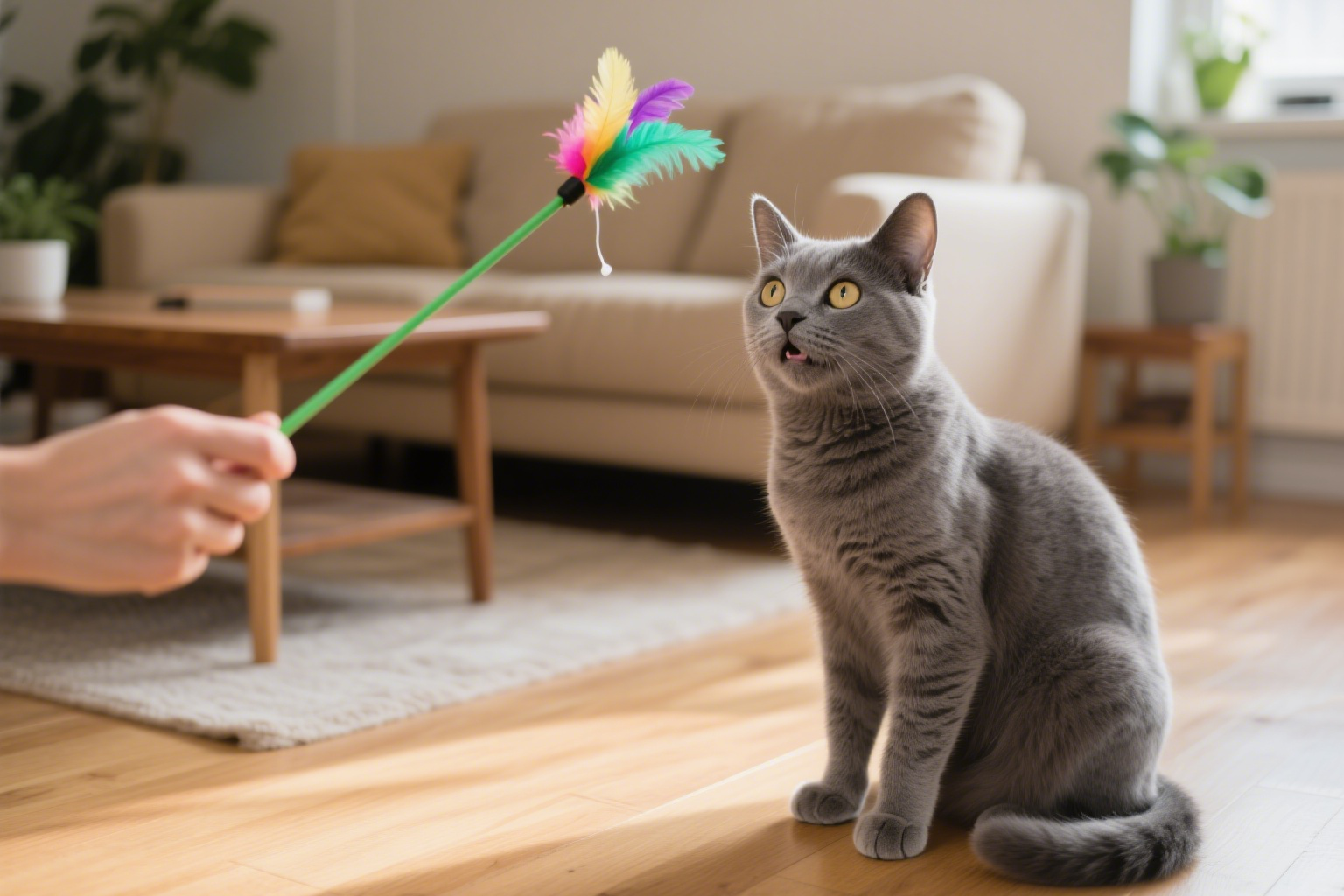That little flurry of activity as your cat pounces on a crinkled ball, the intense focus in their eyes as they stalk a feather wand—it’s easy to dismiss these moments as simple fun, a way for them to burn off energy. But what if I told you that playtime is one of the most profound conversations you can have with your cat?
For an indoor cat, playtime is everything. It’s a theater where their deepest instincts are acted out, a classroom where trust is built, and a language of love that doesn’t require a single word. Learning how to play with a cat the right way is one of the most powerful methods of bonding with your cat through play, transforming you from a mere food provider into a trusted partner.

Table of Contents
Why Play is a Powerful Language of Love
To truly understand the importance of play, we need to look at the world through our cat’s eyes. Inside every fluffy, purring housecat lives the spirit of a master hunter.
- Tapping into Their Inner Hunter: A cat’s natural rhythm is dictated by the prey-drive sequence: stalk, chase, pounce, and “kill.” When you skillfully use a toy to mimic this process, you are not just entertaining them; you are allowing them to fulfill a deep, instinctual need that their safe indoor life doesn’t otherwise provide. This fulfillment leads to a calmer, more satisfied cat.
- Building Trust and Confidence: In the wild, a successful hunt means survival. In your living room, a “successful” play session—where your cat triumphantly “catches” the toy—builds immense confidence. By being the orchestrator of this success, you become a source of positive, rewarding experiences. They learn to trust you as their reliable hunting partner.
- Alleviating Boredom and Stress: An under-stimulated indoor cat is a bored cat, and boredom quickly leads to stress, anxiety, and even destructive behaviors like scratching furniture or over-grooming. Interactive play is a direct antidote, providing crucial mental and physical stimulation.
The Art of the Hunt: How to Play With Your Cat The Right Way
Simply tossing a mouse toy isn’t enough. To truly unlock the bonding potential, you need to become a master “prey operator.”
- Mimic Prey, Don’t Be the Monster: The key to knowing how to play with a cat is to make the toy act like prey. A real mouse or bird would never fly directly into a predator’s face. Instead, have the toy:
- Dart behind furniture.
- Pause and tremble, as if scared.
- Slither along the floor away from your cat.
- Flutter briefly in the air before “hiding” again.
This creates a tantalizing and realistic challenge that fully engages their hunter’s brain.
- Engage All Their Senses: Choose a variety of toys. A crinkly ball engages their hearing, a feather wand mimics the sight and feel of a bird, and a simple laser pointer (use with caution) fires up their chasing instinct. Rotating toys keeps things fresh and exciting.
- The Grand Finale: Always Let Them “Win”: This is the most crucial step. Near the end of the play session, allow your cat to catch the toy definitively. Let them hold it, bite it, and “kill” it. This provides the satisfying conclusion to the hunt. A great tip is to immediately give them a small, high-value treat after they “win,” perfectly completing the hunt-catch-eat cycle.
Create a Consistent Playtime Routine
Cats are creatures of habit. They thrive on routine.
- When to Play: The best times are typically in the morning and evening, aligning with their natural crepuscular (dawn and dusk) hunting instincts. This is when they will have the most energy and be most receptive to play.
- How Long to Play: Consistency is more important than duration. Two focused 10-15 minute sessions per day are far more effective than one sporadic hour-long marathon. A good play session should leave your cat feeling pleasantly tired, not utterly exhausted.
Common Playtime Mistakes to Avoid
- Using Your Hands and Feet: Never teach your cat that your body parts are toys. This can lead to painful scratches and bites, confusing the line between play and aggression.
- Leaving Wand Toys Out: Toys with long strings, ribbons, or feathers should be put away safely after use. They can pose a serious choking or strangulation hazard if the cat plays with them unsupervised.
- Forcing Play When They Aren’t in the Mood: Just like us, cats have their own moods. If your cat walks away or seems uninterested, don’t force it. Respect their boundaries and try again later.
More Than a Game, It’s a Connection
Bonding with your cat through play isn’t complicated. It doesn’t require expensive gadgets or huge amounts of time. It’s about showing up, being present, and learning to speak your cat’s primal language.
When you drag that feather wand across the floor, you’re not just dangling a toy. You’re whispering, “I see you. I understand you. Let’s go on an adventure together.” And in the shared moments of focus, excitement, and triumphant capture, you’ll be forging a bond that is deep, resilient, and truly special.